The Werewolf
What is a Werewolf?
The term werewolf can be found in many occidental cultures from antiquity and the Middle Ages to modern times. In Scandinavia this mythical figure is called 'Varulv', in France 'loup-garou' and in Ireland 'fáelad'. In literature the werewolf is also often called a 'man-wolf' and described as a human being in animal form. Just as manifold as the epochs and cultural circles are the meaning but also the respective sources of origin of these mythical and legendary figures. In the following I would like to briefly outline some of them:
- Werewolf of antiquity:
In ancient times the belief in wolf men was widespread. The Helenen called it Lykanthropos
(`Woodman'). Herodotus reported in the 5th century B.C. that the 'Neurs' who inhabited an area north of the Scythians had the power to turn into wolves for a few days a year. It has been discussed that this might have something to do with the unfamiliar clothing of the furry strangers.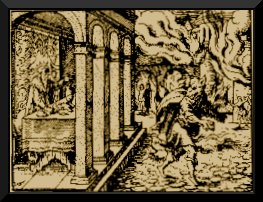
Fig. 1: Lycaon is turned into a wolf by Zeus as punishment.
In ancient Greece, too, the werewolf faith was very much alive. Lycaon, König der king of the Arcadians, was transformed by Zeus into a wolf because of his inhuman cruelty, and he restlessly wandered through the woods. The legend of Lycaon's imprecation is strongly connected with human sacrifices, which were presented to the god Lycaios Zeus on the summit of Lycaion, the wolf mountain, until about 400 BC. It was said, everyone, who ate from the sacrificial meat, would be damned to err 10 years as a wolf to it, before it got back its human shape.
- Norse Werewolf:
In the Old Norse tradition, the term werewolf is based on that of the berserk and the outlaw of peacelessness. Such were called Kveldulfr (night wolf). The father of Skalden Egil is said to have been one of them. According to legend, King Siggeir's mother could also have turned into a bear.
- Werewolf of the Middle Ages:
In the Middle Ages the wildest werewolf stories circulated. This went hand in hand with the depiction of the wolf as a 'food competitor' as a symbol of evil, even as Satan himself, who gave his vassals the ability to transform themselves into wolves and in this form to kill cattle and attack humans. This process of demonization culminated at the time of the Inquisition and continued for a long time afterwards. In order to emphasize the malice, the werewolf was attributed all the instinctive sins and bad character traits of humans such as sodomy, greed, lust for murder, robbery, etc. The werewolf was also given the name "The Evil One". Apparently the concept of the werewolf was extended to all humans wrapped in animal form. As with the simultaneously ruling witch madness, the slightest accusations were sufficient to bring a "werewolf" to the stake. The werewolf trials were a farce, the verdicts of which were de facto already known before the accused had been pressed to their confessions with the aid of all methods of embarrassing questioning. The details described below, both sexual offences and the cruelest killings of the accused werewolves, led to an improbable revaluation of the already circulating legends. The cases listed in medieval werewolf trials confirmed the werewolf faith known since antiquity.
- Modern pseudoscientific Werewolf:
The werewolf is rarely regarded as a hermaphrodite of man and wolf, whose definition I take as a basis in my novels and . This definition excludes a fundamental property of the classical werewolf definition – that of reversible shapeshifting.
In the context of the changing reputation of the wolf and the increasing acceptance within the population, werewolves with positive characteristics are found here for the first time, which are characterized primarily by their closeness to nature. This characteristic is to be underlined by the fusion of animal and human. However, also here the idea of the werewolf as a lurid beast prevails, which errs murdering through its territory.
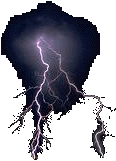 |
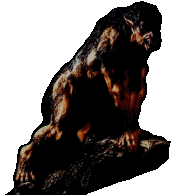 |
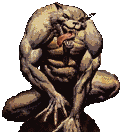 |
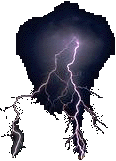 |
How did the term werewolf come about?
Well, there are many cultures whose mythology includes man animals, half man, half animal. Usually the animal was a large
predator hunting at night. Creatures often take the form of the most dangerous animal in the area. In India there are
weretigers, in Africa wereleopards; but the most famous creatures are the werewolves from Central Europe.
The syllable 'were' comes from the Old English word 'wer', which means man. Therefore Werewolf <—> man-wolf
Last modified at 29.12.2018



